Acting landed in the lap of Chris “Ludacris” Bridges out of nowhere.
The Grammy Award-winning hip-hop artist, who plays the role of Tej Parker, an electronics-and-gun-hungry techy and the go-to mechanic for The Fast and the Furious’ illegal street racing and heist team, will be starring for the fifth time in one of Hollywood’s biggest global franchises this Friday.
But it all almost never was—and he can thank a fellow musician for his surprising breakthrough as an actor.
Rapper Ja Rule, who played a role in the original The Fast and the Furious in 2001, blew his shot at 2 Fast 2 Furious simply because he wouldn’t return director John Singleton’s phone calls, who instead of paying the Murder Inc. rapper $15,000 like he originally made for his cameo, was now offering $500,000 for the sequel. This was around the time when Ja Rule was one of hip-hop’s hottest commodities, and as the story goes, his head simply got way too big and he began brushing off Singleton’s shot at the big screen.
In a classic case of “move bitch,” get out the way, next on Singleton’s speed dial was Ludacris—and the rest is history. Ja Rule’s comeuppance was the unexpected “money maker” for the Southern songsmith, who landed the role and has since enjoyed the manic ride of the B-movie’s evolution into a global blockbuster.
“Luckily Ja Rule was acting stupid. If it wasn’t for him doing that, I wouldn’t be here. Now, I pull up on a set in Atlanta with a robe and slippers, please believe!” Ludacris says with a smile that immediately widens from ear-to-ear. “The Fast and Furious is definitely the gift that keeps on giving. People always ask me this, but never in a million years did I think that I’d be here. And now we’ve got [versions] nine and ten planned for you. Let me just keep renegotiating my contract. Sounds good to me!”

The 39-year-old Atlanta-based rapper will be starring again in The Fate of the Furious, which premieres Friday. He’ll be bringing more marketable muscle to a crazy cast that already includes Vin Diesel, The Rock, Michelle Rodriguez, Tyrese Gibson, Jason Statham and Charlize Theron.
After banking more than $3.9 billion in global box office sales, Universal’s action tentpole will open amid sky-high expectations, expected to reach an upward of $400 million this weekend. Furious 7, longtime star Paul Walker’s final film, globally grossed $1.5 billion alone.
Of course, with such a fervent and loyal fan base, the marketing potential for the film has proven to be seismic this time, too, proving that the franchise and the brand are alive and doing very, very well. Marketing has ranged from merchandising with NBC Universal and Mattel to Buckle and Afflication, movie integrations with Dodge and activations across social with the likes of Twitter, Castrol and Xfinity.
Ludacris is personally joining in on the action by leveraging the anticipation and ambitious international roll-out of the film to market and boost his personal brand by touring and performing in such locales as London, Los Angeles and Canada in recent days—all while delivering some well-timed new music.

He premiered his single “Vitamin D” for all formats and dished out doses of prescriptions in the ridiculously entertaining music video on Monday. It was the rapper’s first song since his 2014 album “Ludaversal.”
Ludacris also announced that he will host MTV’s revival of the one-time hit show Fear Factor for the new generation that Viacom is tilting toward. Ludacris will also serve as an executive producer as part of an overarching deal with the network.
The fresh music and breaking news is certainly not by accident. Ludacris—who’s also starred in Crash and Hustle & Flow and has Screen Actor’s Guild, Critic’s Choice and MTV Awards accolades attached to his dossier—says it’s “smart” to pair a movie’s promotional tour with personal projects.
Whether it’s his investments in the mobile game Slang N’ Friendz for which he’s the face and voice, the Uber-for-packages app Roadie, his cognac brand Conjure, or his new restaurant Chicken+Beer, Luda has a lot of different lines for making loot. He’s paired his success in music with smash hit movies and complemented the journey by fulfilling his entrepreneurial zeal.
“You have to be very strategic and smart about your time,” Ludacris says. “We have to promote ourselves on social media and stay ahead of the curve. If you don’t keep up with what’s new, you’ll become your own worst enemy. And nobody wants to be the old disgruntled person having to catch up with what’s going on.”
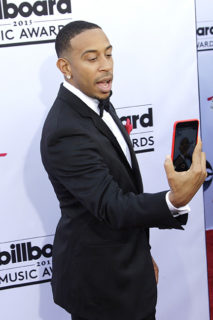
By Tuesday, Ludacris was in a full-fledged press and promotional tour by appearing on Ellen, ESPN and a Facebook Live interview for Extra. He also joined radio shows hosted by Ryan Seacrest and Big Boy. On Wednesday, appearances on Conan and The Talk followed, where he previewed a wild chase scene from the movie of him driving a tank and saving Tyrese from a Lamborghini.
In between the tireless tour, he was actively manning his social handles with live sessions on Instagram and Facebook from the barber chair, was fully operational with a flurry of content on Stories and personally engaging the over 40 million fans on his channels.
In previous weeks, the promotional tour included stops on the Today Show with The Rock, sinking jump shots on the set of the NBA on TNT, cover stories for magazines like CNET and Jezebel and a signature southern brunch at SXSW hosted by ChooseATL, where AListDaily had a chance to catch up with the entertainer.
Here are the highlights of the conversation, as told by Ludacris himself:
On his path to becoming an artist . . .
I always knew what I wanted to do. I wrote my first song when I was nine years old. All of my friends just always wanted to hear more music, and more rhymes. This was a time where labels like Rowdy Records and So So Def Recordings and groups like Kriss Kross and ABC were coming up. I was living with my mom in Illinois, and said that in order for me to get noticed and discovered in the music industry, I have to live with my dad and move to Atlanta. I used to go open mic clubs and talent showcases and started making a name for myself, and meeting different people. After years of demo tapes, I then went and interned for the radio station 97.5 when I was 18 years old, and that’s when it really took off. I had a chance to give all of the artists and producers my music. It took a while, but obviously you see that it worked. But back then, I was known as Chris Lova Lova.
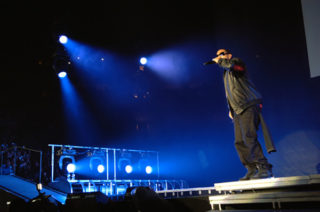
On how music led to acting . . .
To be honest, there wasn’t much intentions at all. It was funny how it happened because I was on tour with Eminem at the time. I got a call saying [director] John Singleton wanted me to try out for a part in the 2003 film 2 Fast, 2 Furious. John is known for taking people from the music world (Ice Cube, Tyrese Gibson) and putting them into movies. I was like, ‘Hell, yeah, I’ll try it! Why not?’ I remember putting it on tape literally 10 minutes before I was about to go on stage. Next thing you know, I got a call saying he wanted me to do the part. Later on, I figured out that he originally wanted Ja Rule for the part, but Ja Rule was acting crazy, or something like that, so he was like, ‘okay, my next best person is Ludacris.’
On how democratization of music with new platforms is changing the industry . . .
Music distribution is becoming more direct to the fans. It’s easier to put your music out, but it’s so saturated and harder to get noticed [for emerging artists] if everyone is in this pool. I think it’s a great way to get discovered. If you can get a certain fan base on your own, and get people to love you, then all of the big wigs and executives will eventually find you because there are people constantly scouring the internet trying to find the next big sensation. But it’s also hard, because anyone can make a hit record right now. You see it. Anyone can just put out music, and it can catch on like wildfire.
On social media . . .
Self-discovery is the best way to do it right now because you have complete creative freedom and control. People are landing [acting] roles just based off of doing their own thing on YouTube, or their social media alone. If you can, showcase yourself and drive people to your channels. Before you know it, you’ll have someone contacting you directly, as opposed to having to beg someone.
On expanding into the content marketing world . . .
That’s one of the things we’re working on. We’re just trying to find the right outlet to make it happen. A lot of people seem to like my “Now That’s Ludacris” storyline on Instagram, so we’re absolutely trying to make it something bigger.
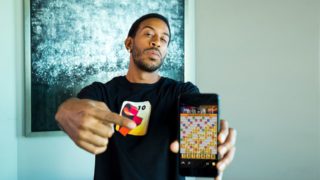
On tech investment . . .
It’s always scary getting into the tech world. I’m not a programmer. Obviously, people are scared of what they don’t know. But the ones who are developing apps and immersed in that world, those are the ones that have their fingers on the pulse of everything going on. So you really have to educate yourself, because this is a very competitive market. Everyone and their momma has an app, or they are working on one. It’s about how you break through with all of that. . . . With Roadie, we were looking for something in tech to get involved in. It’s the future. You can’t get around it. Roadie came to my business partner and I, and out of everything that we were looking at, we were very interested because of the potential it had. The app is growing at an exponential rate. Right now it has so much success, with other investors joining as well. I can’t wait to see what the future holds. We’re very proud of what’s going on, and with all of the partnerships that we’ve been forming, I think we’re going to make some history very soon with Roadie. . . . I have projects that I’m going to need investors in myself. I use one term that’s not in the dictionary that I made up—’entrepre-negro.’
On how music allowed him to build a brand as a businessman . . .
It’s definitely difficult. I had a restaurant called Straits in Atlanta for four years that I eventually had to close down. Some people looked at that as a failure. But I did not, because my new restaurant Chicken+Beer would not be open right now. Shutting Straits down was the best thing that could have happened to me because I got my feet wet in the restaurant business; people took me seriously. That was some of the best four years of my life. That’s what allowed me to even consider something like Chicken+Beer. To have that opportunity is a blessing within itself.
Without sounding cliché, we have to lead by example. When I started at the radio station, they used to require us to do a certain amount of community service and hours every week. At that age, I didn’t truly understand why they were making us do it. But I really saw the impact I had on kids when I was just a local celebrity in Atlanta. As my popularity continued to soar and I became commercially successful as Ludacris, I just kept doing it on a bigger scale and giving back more. Seeing the looks on people’s faces and knowing that they’re going to remember what you did for the rest of their lives, that’s rewarding enough. I’m fortunate for that, and it’s the right thing to do.

It’s my first car, and I still have it till this day! It has over 260,000 miles on it. It was the car I rode around before I got a record deal. When I worked at the Atlanta radio station 97.5, which is now 107.9, this was the first car I ever wanted, and I saved up enough money to put a down payment on it. People would call it the drug dealer car. I had to have one of those cars because even though I wasn’t dealing drugs, I was definitely dealing music out of the trunk! And recently, my 15-year-old daughter got her driver’s permit, so instead of letting her drive my expensive cars, we took the Acura, which has some nice rims on it. She hugged one of the corners a little too close and my rim was scratched the hell up! I’m a little heartbroken right now. I’m going to have to ask Acura to send me the paint so I can get it dipped. I’m a Virgo. I’m a perfectionist.
On the city of Atlanta turning into a destination for creatives and technology . . .
I’ve lived there for 20 years, and I never have seen the city grow this fast. It’s a thriving market for so many opportunities. Los Angeles has always been known as a hub for entertainment. In Atlanta, people are just catching on that you can get so much work, especially with so many studios being built, and TV shows filming there. People just need to understand where to go to get noticed. If you’re an actor and need auditions, you have to know where these things are. . . . I just feel like there is something different about Atlanta. When you think about the music industry, and the culture, and shows like Atlanta, everyone is interested it in. That curiosity is what’s helping Atlanta shine right now. Everyone is gravitating toward it. That’s why all of the shows are successful. People are just drawn to the culture.
404! Yeah, man!
On balancing all of his projects . . .
It’s hard to juggle. I try to focus on one thing at a time. There was a point where I spread myself too thin, but you never know you’re doing that until it happens. You want to put so many things on your plate and see how many things you can do at the same time before realizing that it’s taking away from what got you here in the first place. And obviously for me, that’s music. And I can never shy away from that.
Follow Manouk Akopyan on Twitter @Manouk_Akopyan
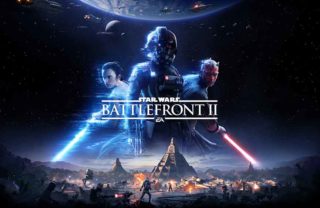
 For a long time, CCP has been known as the EVE Online company. What would you like CCP to be known as in five or ten years?
For a long time, CCP has been known as the EVE Online company. What would you like CCP to be known as in five or ten years? Is CCP partnering for location-based VR experiences?
Is CCP partnering for location-based VR experiences?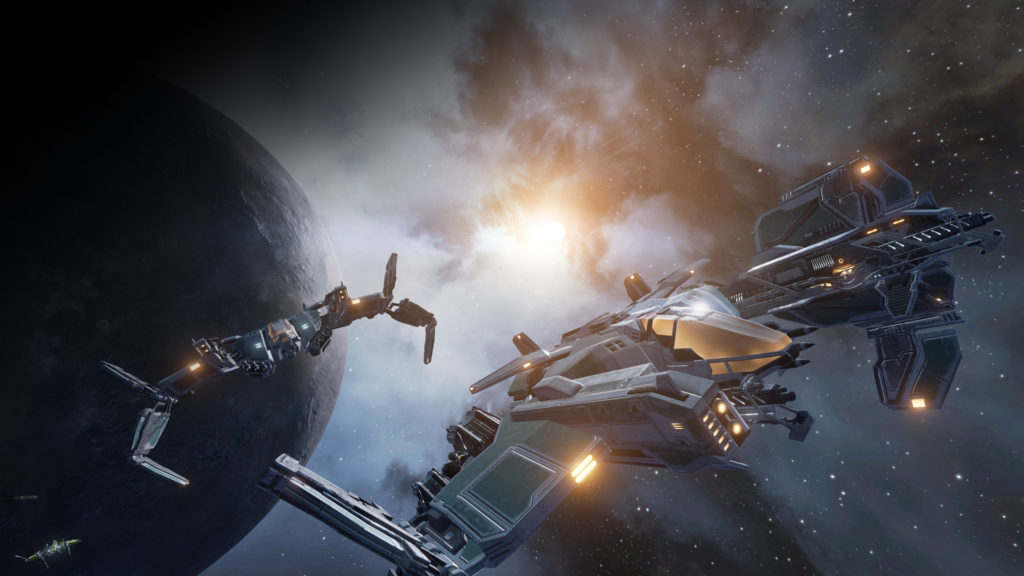
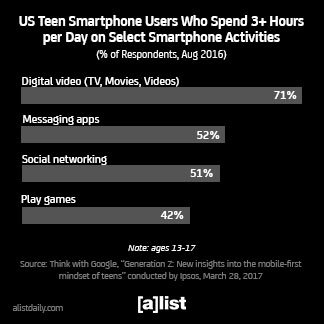 Live From Facebook
Live From Facebook





